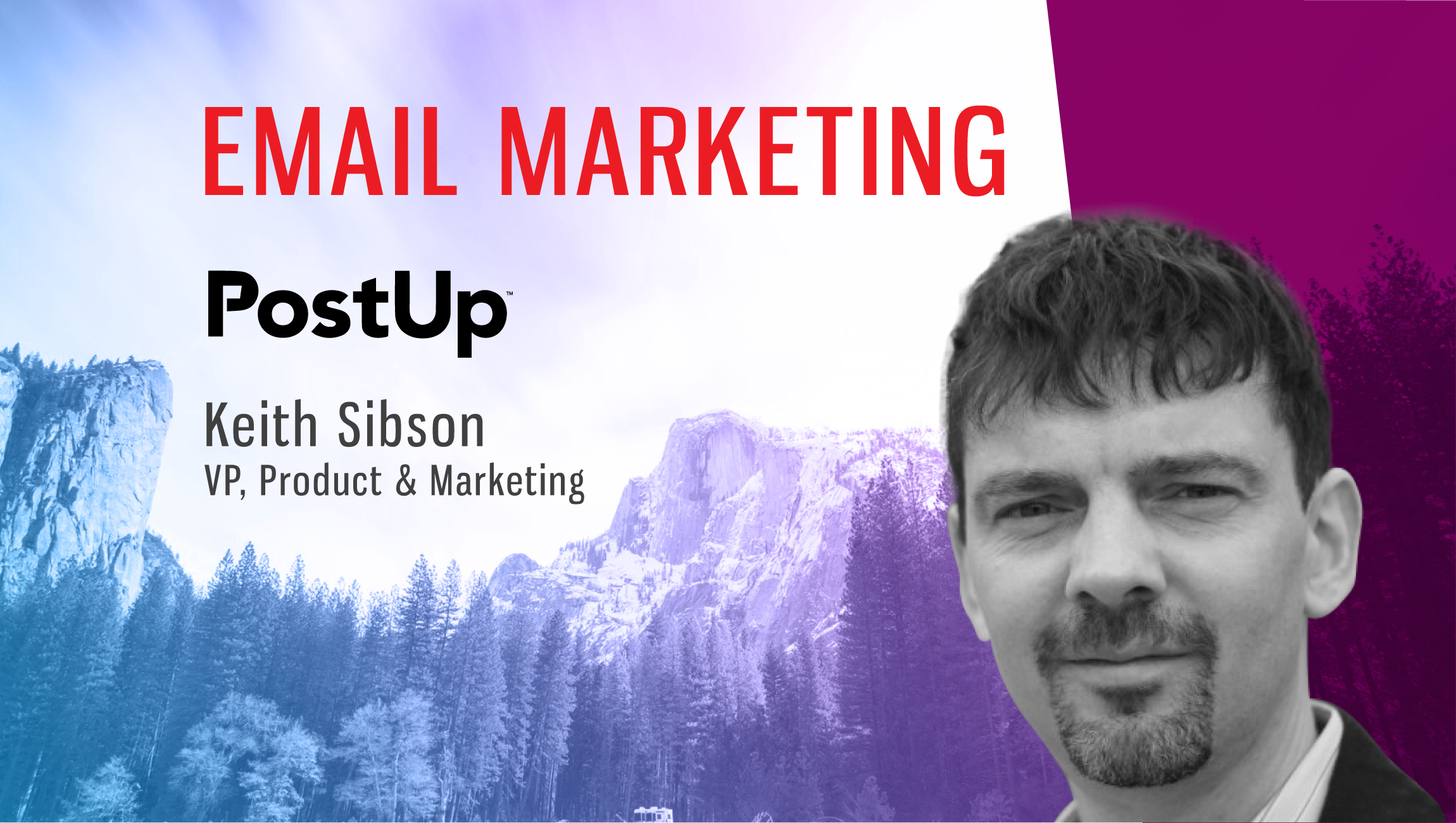Keith Sibson
SVP, Product & Marketing at PostUp
With email, audiences will tolerate a surprisingly large amount of advertising disruption if they value the content. We spoke to Keith Sibson, SVP, Product & Marketing, PostUp, to understand the major challenges for email technology companies in delivering disruption-free experiences.
Html code here! Replace this with any non empty text and that's it.
Tell us about your role at PostUp and the team/technology you handle.
I run Product and Marketing for PostUp. We are an email and audience development platform for the Publishing and Media industry. Our technology is a bit more evolved than a typical general purpose email platform with respect to publishing and media use cases, but the real secret sauce is in our team and our focus. Our entire team is an expert on the publishing business model. For most of our clients, we act as their “growth team,” true partners in their business and not just a technology vendor. I, personally, spend most of my time thinking about how we can help our publishing and media clients drive significant business outcomes; all of our technology is a means to that end.
How do you see trends in Email Marketing Automation influencing CMOs budgets in 2019?
CMOs (and more commonly in our world, Chief Digital Officers) are starting to realize the strategic importance of “owning” their audience, and email is key to that. We are seeing a big increase in interest in what PostUp has to offer and this comes from CMOs and CDOs realizing that email is the first step in establishing audience identity and is a prerequisite for actionable first-party data. The effect on budget is more nuanced, however. At PostUp, we feel that an email-centric approach to first-party data can actually be significantly less expensive because with this strategy there is less need for technologies such as Customer Identity Management, Data Management Platforms, or Customer Data Platforms.
Also, many of our customers that come to us from traditional marketing automation systems are soured on that pricing model — database size — as being inappropriate for how they run their business. They would rather pay for how much they use the platform, and for strategic services that really move the needle on their business. Marketers are starting to realize that more technology does not always equate to more revenue.
What are the core tenets of your email service platform for omnichannel marketing?
Our core tenet is that identity is everything, and that identity starts with an email address because it is literally a person’s identity on the internet. The biggest challenge in omnichannel marketing is knowing to whom you are marketing. The best omnichannel marketing campaign in the world will be ineffective (or even counter-productive) unless you are certain that the person you are reaching in each distinct channel is actually the same person. So it starts with the email, to which we then peg the identity for other channels such as web, browser push, app push, and SMS.
What are the major challenges for email technology companies in delivering disruption-free experiences? How does PostUp manage to deliver relevant experiences?
I’m reading this question as disruption-free related to intrusive advertising. With email, audiences will tolerate a surprisingly large amount of advertising disruption if they value the content, so the most important goal is to have high-quality content that your audience actually seeks out and wants. With more commoditized content, then you have to tread more carefully. Ads should be unobtrusive: Keep banner ads light, and avoid “native” ads.
Users can see through this, and it erodes the perceived value of your content to the point where you earn an unsubscribe or worse, a spam complaint. Perhaps paradoxically, dedicated promotional sends are the least risky, when done right. You want to ensure that if a user unsubscribes from a promotional email, then they are only unsubscribing from promotional emails, and not your entire email program.
In what ways has GDPR affected email?
We haven’t seen much of an effect, to be honest. Many companies overreacted and suffered self-inflicted wounds to their email (and other) programs by unnecessarily opting out US-based subscribers when they didn’t have to, but we guided our clients through the process to preserve the maximum amount of actionable first-party data and the right to communicate.
How is programmatic the cause of digital publishers’ woes today?
Programmatic advertising was seen as a lifeline in the beginning — easy turnkey online revenue for publishers who were struggling to sell digital inventory direct. However, programmatic set in motion two major changes in the publishing industry. First, it lowered the barriers to entry for new publishers, you could start a viable publishing business out of your closet. And many people did: There are literally millions of publishers today with available ad inventory.
Even though digital ad spend has increased massively, the growth in digital publishers has led to an oversupply of inventory, depressing CPMs overall. Second is the change in expectations by advertisers, who now expect huge targetable audiences. Ad networks are now delivering most of the value that advertisers seek in that the Ad Networks have the scale and the targetable data that advertisers want. This allows Ad Networks to take a greater and greater share of the ad spend before it passes to the publisher, and the publishers themselves are being relegated to mere content producers. Overall, this trend has been great for low-cost publishing operations, and a struggle for high-cost (i.e. high-quality) publishers. A programmatic ad pays the same CPM regardless of whether it is placed next to quality journalism or clickbait copied from Reddit.
What are your predictions on ad-blocking as a technology? Is it a worthy investment for advertising companies to keep searching for a bypass?
While consumer use of ad blockers seems to have plateaued, it is still a significant drag on advertising revenues that should be addressed. However, trying to bypass them is futile. It’s an arms race between publishers and ad blockers of more and more complex countermeasures, and any bypass will only ever be temporarily successful. However, it is easy and reliable to detect when ad blockers are present. With our help, many of PostUp’s clients have been successful in asking their audience to whitelist. Tactics range from hard block (whitelist or access to site is blocked) to “nagging” the user on every pageview.
How should businesses unlock the value of their first-party and third-party data for email content?
With our clients, we use their existing first-party data under their noses in Google Analytics. We are able to link 2 years of first-party data in Google Analytics to a specific user identity via an email address. No new fancy technology required; this uses capabilities of Google Analytics available today. The key to understand about email is that it is literally your identity on the Internet, and that identity goes with you across any device you use. An email click carries with it your identity, so whether you are at home, work, get a new device, or clear your cookies, an email click is all it takes to establish or re-establish user identity and apply behavioral data to the correct user profile. If you have someone’s email, you have the keystone of actionable first-party data. Not only does email represent an identity, but also the means to actually reach someone proactively, with your content and for marketing.
How do you work with AI/ML technologies at PostUp? What other technologies are you keenly following in the space?
We are generally somewhat skeptical about AI. While it can be effective, it only works well when there is a lot of data for analysis (or “training”), both in aggregate and at the user level. This is fine for Google and Facebook, but individual publishers generally don’t have the same scale, and the truth is that publishers only have actionable data for less than 20% of their audience. AI might claim a lift of 20% for some KPI such as click rate, but in practice, that translates to only 4% across the entire audience.
Thanks for chatting with us, Keith.
Stay tuned for more insights on marketing technologies. To participate in our Tech Bytes program, email us at news@martechseries-67ee47.ingress-bonde.easywp.com











